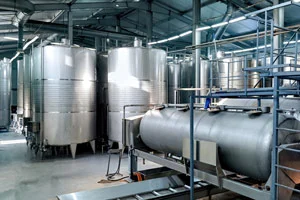Polysaccharides, together with polyphenols, are the lock and key to the wine body. Increasing the content of polysaccharides and mannoproteins contributes to improve the sensations of body and volume in the mouth. Additionally, the interaction with phenolic compounds in red wines reduces the sensation of astringency and bitterness of the tannic fraction. On the other hand, polysaccharides and tannins together increase aromatic perception, prolong the aftertaste and contribute to wine stability.
What are Polysaccharides and what are they used for?
Polysaccharides are complex carbohydrates made up of a large number of simple sugars, which are linked together by glycosidic bonds. Polysaccharides also play an important role in the formation of organic structures and supporting tissues, especially in plants.
In oenology, the polysaccharides used come mainly from two sources:
- Microbiological (yeasts)
- Plants (gum arabic)
How many types of polysaccharides are there?
As we have already mentioned, the polysaccharides used in oenology have two main origins, microbiological and vegetable, the former being the most important.
Polysaccharides from yeasts
The yeast cell wall is a fundamental structure for shaping the cells, as well as protecting them and controlling their permeability. This wall, which represents 20-30% of the total weight of the cell, is made of several complex polysaccharides, including β-glucans, mannoproteins and chitin.
Several yeast derivatives are available within the group of commercial polysaccharides, but their composition changes considerably:
- Inactive yeasts: have a relatively low polysaccharide content. They require a prolonged contact time to release the polysaccharides.
- Yeast hulls: it is only the cell wall of the yeast. They have a higher polysaccharide content and require a shorter contact time to release the polysaccharide, as well as a higher mannoprotein fraction versus inactive yeast.
- Purified mannoprotein: is only the soluble polysaccharide fraction, i.e. the mannoprotein, which has an immediate effect on the wine.
What is their role in wine?
Polysaccharides have different effects on wines. First, they improve organoleptic perception, as they contribute to improving the sensations of body and volume in the mouth, reducing astringency and increasing persistence and balance. They also stabilize the aromatic fraction and delay its perception (aftertaste). Similarly, they also provide tartaric stability (blocking crystallization reactions), protein and coloring matter stability (interaction with tannins and proteins).
In the case of finished wine, polysaccharides may be added to the fermentation lees in order to increase the participation of these molecules in the wine’s flavor sensations. They can also replace the fermentation lees whenever the lees do not have the necessary sensory or microbiological quality (reduction aromas, high volatile acidity, coming from grapes at the end of the harvest, from stuck fermentations, unhealthy harvests, etc.).
Another application of polysaccharides is the preparation of wines for bottling, to increase structure and body, to reduce some tannic astringency or to attenuate the excessive impact of wood, if required. During the second fermentation in the bottle, increasing the volume of the lees will increase the effect of the aging in the bottle, improving the sensations of volume in the mouth, the typical aromatic intensity and persistence of the foam.
Recommended reading: What are the benefits of fining tannins?
Agrovin polysaccharides and mannoproteins
As seen above, both mannoproteins and other yeast polysaccharides are extremely positive for wine quality, and it is possible to indirectly increase their content by using mannoprotein-producing yeast strains, glucanase enzymes, or organic preparations rich in these compounds.
Depending on the desired results, the following Agrovin products can be used:
- SuperBouquet EVOLUTION: has an antioxidant effect to protect the aromas and delay the evolution of the wines.
- MannoAROME, MannoCrom and MannoBlanc: are used in alcoholic fermentation to improve aromatic and coloring matter structure and stability, starting from the transformation of the must into wine. The first two are for red wine production, while MannoBlanc is used for white wine production.
- SuperBouquet and SuperBouquet MN: are used in finished wine and help improve the sensory characteristics of the wine, refining aggressive tannins and increasing the sensations of body and mouthfeel.
- MannoPLUS: it is a pure soluble mannoprotein added to the finished wine before the final filtration.
For more information, please contact us.


